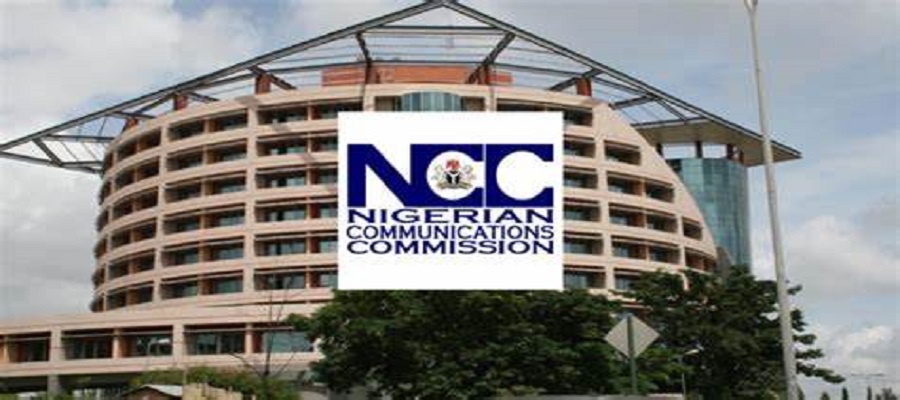Telecom
Key Trends in Sophos 2022 Threat Report

Sophos, a global leader in next-generation cybersecurity, on Wednesday published the Sophos 2022 Threat Report, which shows how the gravitational force of ransomware’s black hole is pulling in other cyberthreats to form one massive, interconnected ransomware delivery system – with significant implications for IT security.

The report, written by SophosLabs security researchers, Sophos Managed Threat Response threat hunters and rapid responders, and the Sophos AI team, provides a unique multi-dimensional perspective on security threats and trends facing organizations in 2022.
The Sophos 2022 Threat Report analyzes the following key trends:
1. Over the coming year, the ransomware landscape will become both more modular and more uniform, with attack “specialists” offering different elements of an attack “as-a-service” and providing playbooks with tools and techniques that enable different adversary groups to implement very similar attacks.
According to Sophos researchers, attacks by single ransomware groups gave way to more ransomware-as-a-service (RaaS) offerings during 2021, with specialist ransomware developers focused on hiring out malicious code and infrastructure to third-party affiliates.
Some of the most high profile ransomware attacks of the year involved RaaS, including an attack against Colonial Pipeline in the U.S. by a DarkSide affiliate.
An affiliate of Conti ransomware leaked the implementation guide provided by the operators, revealing the step-by-step tools and techniques that attackers could use to deploy the ransomware.
Once they have the malware they need, RaaS affiliates and other ransomware operators can turn to Initial Access Brokers and malware delivery platforms to find and target potential victims. This is fueling the second big trend anticipated by Sophos.
2. Established cyberthreats will continue to adapt to distribute and deliver ransomware. These include loaders, droppers and other commodity malware; increasingly advanced, human-operated Initial Access Brokers; spam; and adware. In 2021, Sophos reported on Gootloader operating novel hybrid attacks that combined mass campaigns with careful filtering to pinpoint targets for specific malware bundles.
3. The use of multiple forms of extortion by ransomware attackers to pressure victims into paying the ransom is expected to continue and increase in range and intensity. In 2021, Sophos incident responders catalogued 10 different types of pressure tactics, from data theft and exposure, to threatening phone calls, distributed denial of service (DDoS) attacks, and more.
4. Cryptocurrency will continue to fuel cybercrimes such as ransomware and malicious cryptomining, and Sophos expects the trend will continue until global cryptocurrencies are better regulated. During 2021, Sophos researchers uncovered cryptominers such as Lemon Duck and the less common, MrbMiner, taking advantage of the access provided by newly reported vulnerabilities and targets already breached by ransomware operators to install cryptominers on computers and servers.
“Ransomware thrives because of its ability to adapt and innovate,” said Chester Wisniewski, principal research scientist at Sophos. “For instance, while RaaS offerings are not new, in previous years their main contribution was to bring ransomware within the reach of lower-skilled or less well-funded attackers.
This has changed and, in 2021, RaaS developers are investing their time and energy in creating sophisticated code and determining how best to extract the largest payments from victims, insurance companies, and negotiators. They’re now offloading to others the tasks of finding victims, installing and executing the malware, and laundering the pilfered cryptocurrencies.
This is distorting the cyberthreat landscape, and common threats, such as loaders, droppers, and Initial Access Brokers that were around and causing disruption well before the ascendancy of ransomware, are being sucked into the seemingly all-consuming ‘black hole’ that is ransomware.
“It is no longer enough for organizations to assume they’re safe by simply monitoring security tools and ensuring they are detecting malicious code. Certain combinations of detections or even warnings are the modern equivalent of a burglar breaking a flower vase while climbing in through the back window.
“Defenders must investigate alerts, even ones which in the past may have been insignificant, as these common intrusions have blossomed into the foothold necessary to take control of entire networks.”
Additional trends Sophos analyzed include:
· After the ProxyLogon and ProxyShell vulnerabilities were discovered (and patched) in 2021, the speed at which they were seized upon by attackers was such that Sophos expects to see continued attempts to mass-abuse IT administration tools and exploitable internet facing services by both sophisticated attackers and run-of-the-mill cybercriminals
· Sophos also expects cybercriminals to increase their abuse of adversary simulation tools, such as Cobalt Strike Beacons, mimikatz and PowerSploit. Defenders should check every alert relating to abused legitimate tools or combination of tools, just as they would check a malicious detection, as it could indicate the presence of an intruder in the network
· In 2021, Sophos researchers detailed a number of new threats targeting Linux systems and expect to see a growing interest in Linux-based systems during 2022, both in the cloud and on web and virtual servers
· Mobile threats and social engineering scams, including Flubot and Joker, are expected to continue and diversify to target both individuals and organizations
· The application of artificial intelligence to cybersecurity will continue and accelerate, as powerful machine learning models prove their worth in threat detection and alert prioritization. At the same time, however, adversaries are expected to make increasing use of AI, progressing over the next few years from AI-enabled disinformation campaigns and spoof social media profiles to watering-hole attack web content, phishing emails and more as advanced deepfake video and voice synthesis technologies become available
To learn more about the threat landscape in 2021 and what this means for IT security in 2022, read the full Sophos 2022 Threat Report.
Additional content for the Sophos 2022 Threat Report:
· Video of the headline findings, presented by Chester Wisniewski, principal research scientist, Sophos
· An article on SophosLabs Uncut recapping the report sections
· A Sophos News opinion piece by Wisniewski on the ransomware turf wars
· A Naked Security article introducing the report
Telecom
NCC Bars Ex-Officials from Joining Telecom Firms for 5 Years

Nigerian Communications Commission (NCC) has introduced strict corporate governance rules that will bar its top officials from taking up roles in telecom companies they regulate until five years after leaving office.

Under the new Corporate Governance Guidelines for the Communications Industry, the Chairman, Executive Vice-Chairman, and Board Commissioners, both executive and non-executive, are barred from being appointed to any position in a licensed telecom company until five years after their exit from the Commission.
Similarly, Directors of Departments at the NCC face a three-year cooling-off period before they can take jobs with any licensee under the Commission’s supervision.
The move, announced on August 11, 2025, seeks to enhance transparency, accountability, and ethical standards in Nigeria’s fast-growing telecommunications industry.
Departmental directors face a three-year cooling-off period before joining any licensee under the agency’s oversight.
This policy aims to prevent conflicts of interest and ensure impartial regulation.
By creating a clear separation between regulators and the industry, the NCC hopes to curb undue influence and maintain public trust.
]The guidelines reflect a global trend in regulatory bodies enforcing cooling-off periods.
Similar measures exist in industries like finance and energy to safeguard against regulatory capture.
For Nigeria’s telecom sector, this is a significant step toward aligning with international best practices.
The NCC’s new framework also targets telecom operators’ internal governance.
Board chairmen or vice-chairmen are barred from holding executive powers or serving as MD/CEO of a licensee.
Former board chairmen and non-executive directors must wait five years before assuming executive roles in the same company or its affiliates.
Additionally, no more than two family members can serve on a licensee’s board simultaneously.
These measures aim to promote balanced board structures and reduce nepotism.
Dr Aminu Maida, executive vice-chairman, NCC, emphasised the importance of these reforms.
“Corporate governance is no longer a soft requirement. It is now a strategic imperative,” he said during the guidelines’ launch in Lagos.
Maida highlighted that robust governance correlates with better business performance, citing an NCC internal review. Companies with strong governance frameworks consistently outperform peers in service delivery, financial management, and regulatory compliance.
Nigeria’s telecom sector is a cornerstone of its digital economy. With over 222 million active mobile subscriptions as of Q1 2025, the industry supports critical sectors like finance, healthcare, and education.
However, challenges like cybersecurity threats, energy shocks, and rising consumer demands have exposed governance weaknesses. The NCC’s new rules aim to address these by fostering transparency, accountability, and innovation.
The guidelines apply to all communications companies holding individual licences and paying Annual Operating Levies (AOL) under the AOL Regulations 2022.
The NCC has indicated flexibility in applying the rules across different licence categories, with phased compliance measures to be communicated in writing. While the rules may cause short-term disruptions for operators, the NCC insists that long-term benefits, like improved service quality and market trust, will outweigh these challenges.
Telecom
Airtel, Vodacom sign Network Infrastructure Agreement to Drive Digital Inclusion

Airtel Africa and Vodacom Group have announced a strategic infrastructure sharing agreement in key markets including Mozambique, Tanzania and the Democratic Republic of Congo (DRC), subject to regulatory approvals in the various countries.

The agreement marks a transformative milestone in promoting digital inclusion and expanding access to reliable connectivity across Africa.
The initial partnership focuses on sharing fibre networks and tower infrastructure, to accelerate the roll-out of digital services in these markets, increasing connectivity for customers while reducing operators’ infrastructure costs and improving speed to market.
By leveraging existing infrastructure, the collaboration aims to deliver improved connectivity, faster internet speeds, and more reliable services. This will not only enhance customer experience but also assist with providing access to digital services for a broader population, particularly those in underserved areas, helping to bridge the digital divide in Africa.
Vodacom Group’s chief executive officer Shameel Joosub said: “Providing connectivity to empower people is at the core of our strategy. Our partnership with Airtel Africa is a proactive step forward in creating a sustainable, inclusive, and connected digital future for the continent.
Through infrastructure sharing, we can provide cost-effective services to more people, more rapidly, ensuring that no one is left behind in the digital age. As we fulfil our ambition to connect 260 million customers by 2030, the need for scalable and cost-efficient network solutions becomes increasingly significant.
This partnership provides us with the opportunity to narrow the digital divide, empowering more individuals and communities through digitalisation across the continent. It is aligned with our purpose to connect for a better future,” concludes Joosub.
Airtel Africa’s chief executive officer Sunil Taldar said: “This partnership is aligned with our unwavering commitment to delighting our customers by always making our network available to them even in the remotest locations.
“Working with Vodacom, we will open greater access to digital and financial opportunities which will transform the lives of our customers while complying with all regulatory requirements.
“Even as competitors, it has become a business imperative for us to collaborate in the provision of critical infrastructure required to build resilient network with strong capacity to support the emerging digital technologies as well as the growing need for data-enabled products and services.
“Accelerating the deployment of fibre connectivity is a key enabler in the acceleration of 4G and 5G technologies in Africa to deliver the high-speed, low-latency, and reliable connections needed for modern digital applications.
“This partnership allows for further opportunities for both operators to enhance network performance, extend coverage, and increase mobile, fixed, and financial services leveraging a broader footprint on the continent.”
Telecom
Truecaller Crosses 100m Users in MEA Region

Truecaller, a global caller ID and spam prevention platform, has reached 100 million active users in the Middle East and Africa (MEA) region, representing a 19% year-over-year increase.

According to the platform, the region’s main markets include Egypt, Nigeria, South Africa, Kenya, Algeria, Ghana, and Jordan.
Truecaller is routinely utilised on 20% to 45% of connected cellphones in these areas, including Android and iOS devices, according to the business.
The app has gained traction across the African continent with its concept of resolving communication issues for individuals and businesses by blocking unsolicited calls.
It has also collaborated with local businesses, forming major partnerships including a recent cooperation with Telecom Egypt to change consumer communication and experience by providing safe, customised, and seamless calling experiences.
Truecaller’s CEO, Rishit Jhunjhunwala, stated that the service has grown organically in markets such as MEA and India due to the mobile first environment, which uses a user’s mobile number as the primary identifier of calls. He under-lined that the MEA market provides a growth-enabling environment.
“We’re continuing to strengthen our organisation and our partnerships in the region, because we believe that the MEA is poised for significant growth for many years ahead,” said Jhunjhunwala.

 News3 days ago
News3 days agoGoogle Hit by AI-driven Cyber Attack

 General News3 days ago
General News3 days agoKuwait Busts Nigerian Cybercrime Ring Targeting Telecom Tower, Banks

 News3 days ago
News3 days agoFIRS Rolls out e-invoicing System for Large Corporate Taxpayers

 E-Business3 days ago
E-Business3 days agoPalmPay Partners AXA Mansard Health to Make Digital Insurance Accessible, Affordable

 E-Business3 days ago
E-Business3 days agoZequence Digital Boss Calls for Strong IP Laws Enforcement, to Protect Nigeria’s Software Sector

 Telecom3 days ago
Telecom3 days agoMTN Nigeria’s Mega Billion Promo Turns Airtime into Fortune for Thousands Amid Economic Strain

 E-Financial2 days ago
E-Financial2 days agoNBS Reports ₦6.72 Trillion VAT Haul as Tax Reforms Pay Off

 Telecom3 days ago
Telecom3 days agoI see Crisis, Resignations @ MTN, Airtel, Others – Primate Ayodele



























